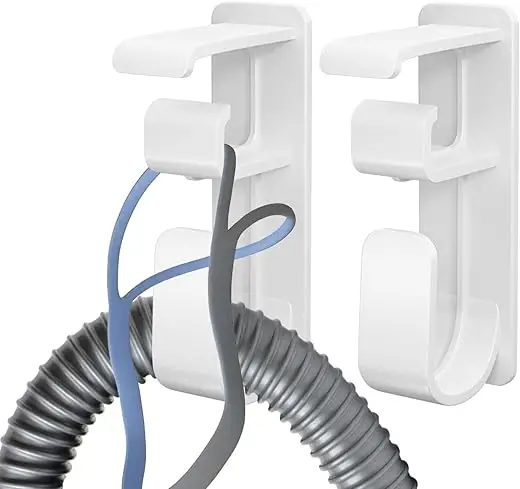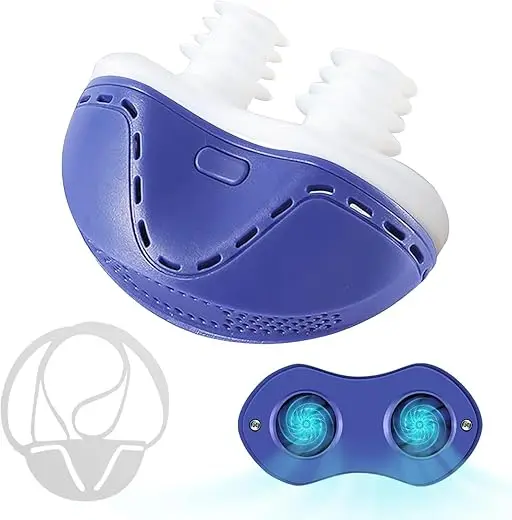Introduction: Why Sleep Apnea Symptoms Matter More Than You Think
Sleep apnea affects over 39 million adults in the United States alone, yet experts estimate that 80-90% of cases remain undiagnosed. The reason? Many people dismiss the symptoms as normal aging, stress, or simply being tired. This comprehensive guide will help you recognize the warning signs of sleep apnea, understand when to seek help, and potentially save your life or the life of someone you love.
Unlike simple snoring or occasional poor sleep, sleep apnea is a serious medical condition where breathing repeatedly stops and starts during sleep. These interruptions can occur 5 to over 100 times per hour, depriving your brain and body of oxygen. The consequences extend far beyond feeling tired – untreated sleep apnea increases your risk of heart disease, stroke, diabetes, and even premature death.
The Complete List of Sleep Apnea Symptoms
Primary Nighttime Symptoms
Loud, Persistent Snoring While not everyone who snores has sleep apnea, loud snoring punctuated by periods of silence is often the first sign partners notice. This isn’t ordinary snoring – it’s typically loud enough to disturb others, even through closed doors. The snoring often becomes louder when sleeping on your back and may be accompanied by snorting or choking sounds.
Witnessed Breathing Interruptions Perhaps the most alarming symptom for bed partners is watching someone stop breathing during sleep. These pauses typically last 10-30 seconds but can extend longer. The person may appear to be struggling to breathe, followed by a loud gasp, snort, or choking sound as breathing resumes. Many people with sleep apnea are completely unaware these episodes are occurring.
Gasping or Choking During Sleep Sudden awakenings accompanied by gasping, choking, or a feeling of suffocation are classic signs of sleep apnea. You might wake up feeling panicked, with your heart racing, desperately trying to catch your breath. Some people describe it as feeling like they’re drowning or being strangled in their sleep.
Restless Sleep and Frequent Position Changes People with sleep apnea often toss and turn throughout the night, unconsciously trying to find a position that keeps their airway open. You might wake up with tangled sheets, pillows on the floor, or find yourself in completely different positions than when you fell asleep.
Frequent Nighttime Urination (Nocturia) Waking up two or more times per night to urinate can indicate sleep apnea. The breathing interruptions trigger a complex hormonal response that increases urine production. Many people mistakenly attribute this to aging, prostate issues, or drinking too much water before bed.
Daytime Symptoms That Shouldn’t Be Ignored
Excessive Daytime Sleepiness This goes beyond normal tiredness. People with sleep apnea experience overwhelming drowsiness that interferes with daily activities. You might fall asleep during conversations, while watching TV, at work meetings, or dangerously, while driving. This persistent exhaustion occurs regardless of how many hours you spend in bed.
Morning Headaches Waking up with a dull, pressing headache that typically improves within a few hours is common with sleep apnea. These headaches result from carbon dioxide buildup and oxygen deprivation during the night. They often feel like tension headaches, affecting both sides of the head.
Cognitive Difficulties Sleep apnea significantly impacts brain function, causing:
- Difficulty concentrating or focusing on tasks
- Memory problems, especially with short-term memory
- Decreased work or school performance
- Difficulty making decisions
- Increased errors and accidents
- “Brain fog” or feeling mentally cloudy
Mood Changes and Irritability Chronic sleep deprivation from sleep apnea can cause:
- Increased irritability and short temper
- Anxiety, especially in the morning
- Depression or feelings of hopelessness
- Mood swings throughout the day
- Decreased interest in activities you once enjoyed
- Social withdrawal
Dry Mouth or Sore Throat Upon Waking Breathing through your mouth all night, which is common with sleep apnea, leads to a parched mouth and throat discomfort in the morning. You might also experience a raspy voice or need to drink water immediately upon waking.
Different Types of Sleep Apnea and Their Unique Symptoms
Obstructive Sleep Apnea (OSA) Symptoms
OSA, the most common form affecting 90% of sleep apnea cases, occurs when throat muscles relax and block the airway. Specific symptoms include:
- Very loud snoring
- Obvious breathing interruptions witnessed by others
- Frequent awakenings with gasping
- High blood pressure that’s difficult to control
- Weight gain or difficulty losing weight
- Swelling in the legs (edema)
Central Sleep Apnea (CSA) Symptoms
CSA occurs when the brain fails to send proper signals to breathing muscles. Unlike OSA, CSA symptoms may include:
- Breathing interruptions WITHOUT snoring
- Awakening with shortness of breath that improves quickly when sitting up
- Difficulty staying asleep (insomnia)
- Excessive daytime sleepiness despite insomnia
- Chest pain at night
- Difficulty concentrating more severe than with OSA
Complex/Mixed Sleep Apnea Symptoms
This combination of OSA and CSA presents symptoms from both types, often appearing after someone with OSA begins CPAP treatment. Watch for:
- Persistent fatigue despite CPAP use
- Continued breathing interruptions on CPAP
- Alternating patterns of snoring and silent pauses
Silent Sleep Apnea: The Hidden Symptoms You’re Missing
Not all sleep apnea announces itself with loud snoring. Silent or “quiet” sleep apnea can be even more dangerous because it often goes undetected longer. Subtle symptoms include:
- Persistent fatigue without obvious cause
- Gradual weight gain
- Decreased libido or sexual dysfunction
- Frequent acid reflux or GERD
- Night sweats unrelated to room temperature
- Teeth grinding (bruxism) or jaw clenching
- Unexplained high blood pressure
- Irregular heartbeat or palpitations
- Difficulty staying asleep without knowing why
Sleep Apnea Symptoms in Specific Populations
Sleep Apnea Symptoms in Women
Women often experience different or additional symptoms that can delay diagnosis:
- Insomnia rather than excessive sleepiness
- Morning headaches more frequently than men
- Depression and anxiety as primary complaints
- Fatigue described as “exhaustion” rather than “sleepiness”
- Restless legs syndrome
- More subtle snoring
- Nighttime heartburn
- Symptoms often worsen during menstruation, pregnancy, and menopause
Sleep Apnea Symptoms in Children
Pediatric sleep apnea presents differently than adult cases:
- Behavioral problems or ADHD-like symptoms
- Poor school performance
- Bedwetting beyond typical age
- Sleeping in unusual positions (neck hyperextended)
- Mouth breathing during day and night
- Excessive sweating during sleep
- Growth problems or failure to thrive
- Morning headaches
- Daytime hyperactivity rather than sleepiness
Sleep Apnea Symptoms in Older Adults
Age-related changes can mask or complicate sleep apnea symptoms:
- Confusion or cognitive decline mistaken for dementia
- Frequent nighttime falls
- Increased forgetfulness
- Daytime napping considered “normal aging”
- Depression attributed to other causes
- Decreased alertness affecting driving safety
Severe Sleep Apnea Symptoms: Red Flags Requiring Immediate Attention
Severe sleep apnea (AHI over 30 events per hour) presents intensified symptoms and serious health risks:
Cardiovascular Warning Signs:
- Chest pain during sleep or upon waking
- Irregular heartbeat or palpitations
- Swelling in feet and ankles
- Shortness of breath when lying flat
- Waking up gasping multiple times nightly
Neurological Concerns:
- Significant memory impairment
- Personality changes
- Hallucinations upon waking (hypnagogic)
- Increased risk of stroke symptoms
- Severe morning confusion
Metabolic Issues:
- Difficult-to-control diabetes
- Unexplained weight gain
- Metabolic syndrome development
- Fatty liver disease
When Sleep Apnea Symptoms Mean You Need Immediate Help
Seek emergency medical attention if you experience:
- Chest pain or pressure during sleep
- Severe shortness of breath that doesn’t improve
- Confusion or difficulty staying conscious during the day
- Falling asleep while driving or operating machinery
- Heart palpitations with dizziness
- Signs of stroke (facial drooping, arm weakness, speech difficulties)
Schedule a urgent doctor’s appointment if you have:
- Loud snoring with witnessed breathing pauses
- Excessive daytime sleepiness affecting work or relationships
- Morning headaches occurring more than twice weekly
- High blood pressure that’s not responding to medication
- Multiple symptoms from the lists above
The Hidden Dangers of Ignoring Sleep Apnea Symptoms
Untreated sleep apnea doesn’t just affect sleep quality – it systematically damages multiple body systems:
Cardiovascular System:
- 2-3 times higher risk of heart attack
- 60% increased stroke risk
- Development of atrial fibrillation
- Treatment-resistant hypertension
- Heart failure risk doubles
Brain and Cognitive Function:
- Increased risk of dementia and Alzheimer’s
- Permanent memory impairment
- Decreased gray matter in the brain
- Higher risk of depression and anxiety disorders
- Impaired executive function
Metabolic Health:
- Type 2 diabetes risk increases by 50%
- Weight gain and difficulty losing weight
- Metabolic syndrome development
- Fatty liver disease
- Hormonal imbalances
Quality of Life:
- 7-fold increase in car accidents
- Decreased work productivity and increased errors
- Relationship problems due to snoring and mood changes
- Social isolation from fatigue
- Decreased life expectancy by 8-10 years if untreated
Taking Action: Your Next Steps
If you recognize multiple symptoms from this guide, don’t wait to seek help. Here’s your action plan:
- Document Your Symptoms
- Keep a sleep diary for two weeks
- Note daytime symptoms and their severity
- Ask your partner to observe your sleep
- Record any witnessed breathing interruptions
- Use a Screening Tool
- Complete the STOP-BANG questionnaire
- Try the Epworth Sleepiness Scale
- Consider using a sleep tracking app
- Document your results to share with your doctor
- Prepare for Your Doctor’s Visit
- List all symptoms, even those seeming unrelated
- Bring your sleep diary and screening results
- Include current medications and health conditions
- Have questions ready about testing options
- Understand Testing Options
- Home sleep apnea tests (HST) for straightforward cases
- In-lab polysomnography for comprehensive evaluation
- Multiple sleep latency tests if daytime sleepiness is severe
- Follow-up testing to confirm treatment effectiveness
Conclusion: Knowledge Is Your First Step to Better Sleep
Recognizing sleep apnea symptoms is the crucial first step toward reclaiming your health, energy, and quality of life. While this guide provides comprehensive information about symptoms, remember that sleep apnea is highly treatable. Modern treatments, including CPAP therapy, oral appliances, and lifestyle modifications, can eliminate symptoms and reverse many health risks.
Don’t let another night pass wondering if your symptoms indicate sleep apnea. The average person with sleep apnea waits seven years before seeking treatment – years of unnecessary fatigue, health risks, and diminished quality of life. By reading this guide and recognizing these symptoms, you’re already ahead of the curve.
Take action today. Your future self – rested, energized, and healthy – will thank you for paying attention to these warning signs now. Sleep apnea may be common, but suffering from it doesn’t have to be your normal.
If you found this guide helpful, share it with someone who might be experiencing these symptoms. Early detection and treatment of sleep apnea can literally save lives.



